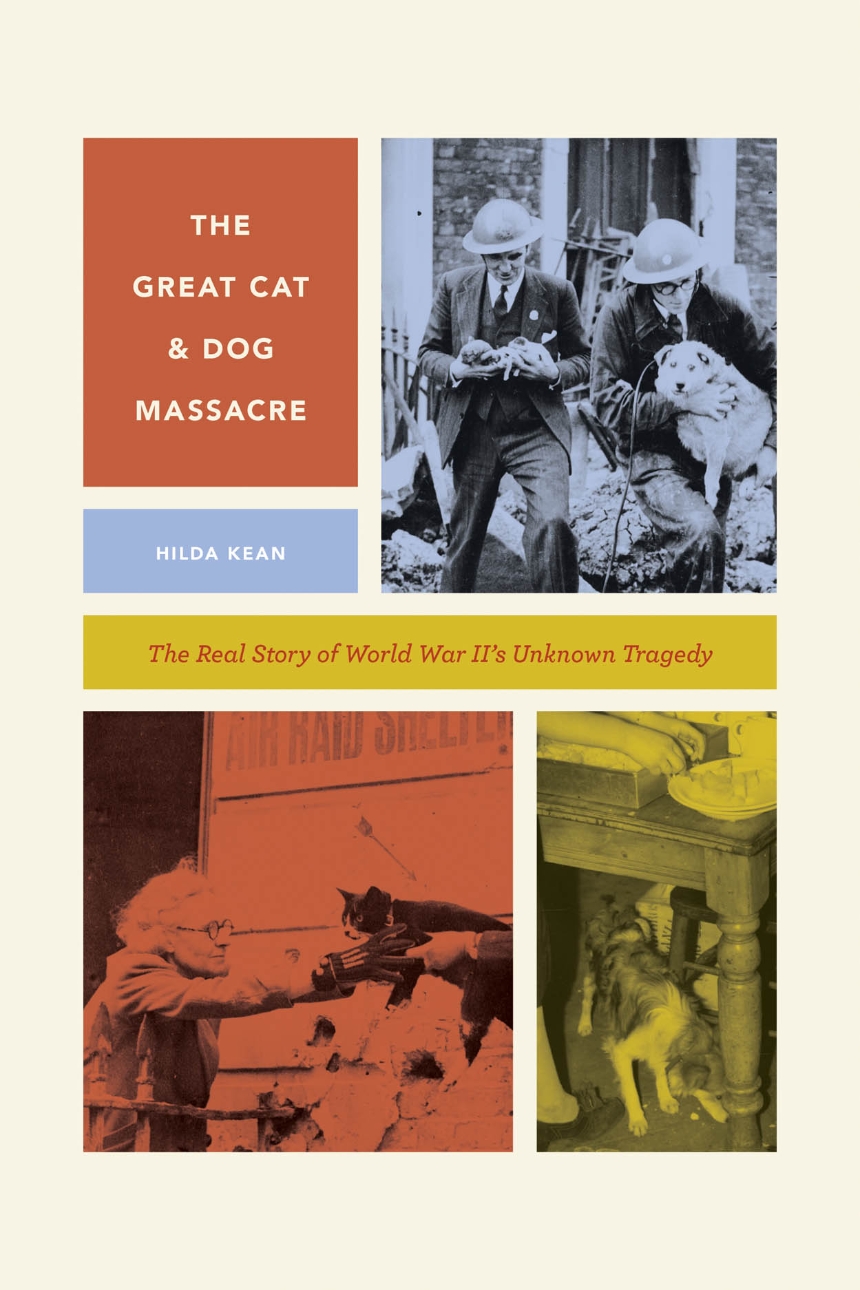The Great Cat and Dog Massacre
The Real Story of World War Two’s Unknown Tragedy
9780226573946
9780226318325
9780226318462
The Great Cat and Dog Massacre
The Real Story of World War Two’s Unknown Tragedy
The tragedies of World War II are well known. But at least one has been forgotten: in September 1939, four hundred thousand cats and dogs were massacred in Britain. The government, vets, and animal charities all advised against this killing. So why would thousands of British citizens line up to voluntarily euthanize household pets?
In The Great Cat and Dog Massacre, Hilda Kean unearths the history, piecing together the compelling story of the life—and death—of Britain’s wartime animal companions. She explains that fear of imminent Nazi bombing and the desire to do something to prepare for war led Britons to sew blackout curtains, dig up flower beds for vegetable patches, send their children away to the countryside—and kill the family pet, in theory sparing them the suffering of a bombing raid. Kean’s narrative is gripping, unfolding through stories of shared experiences of bombing, food restrictions, sheltering, and mutual support. Soon pets became key to the war effort, providing emotional assistance and helping people to survive—a contribution for which the animals gained government recognition.
Drawing extensively on new research from animal charities, state archives, diaries, and family stories, Kean does more than tell a virtually forgotten story. She complicates our understanding of World War II as a “good war” fought by a nation of “good” people. Accessibly written and generously illustrated, Kean’s account of this forgotten aspect of British history moves animals to center stage—forcing us to rethink our assumptions about ourselves and the animals with whom we share our homes.
In The Great Cat and Dog Massacre, Hilda Kean unearths the history, piecing together the compelling story of the life—and death—of Britain’s wartime animal companions. She explains that fear of imminent Nazi bombing and the desire to do something to prepare for war led Britons to sew blackout curtains, dig up flower beds for vegetable patches, send their children away to the countryside—and kill the family pet, in theory sparing them the suffering of a bombing raid. Kean’s narrative is gripping, unfolding through stories of shared experiences of bombing, food restrictions, sheltering, and mutual support. Soon pets became key to the war effort, providing emotional assistance and helping people to survive—a contribution for which the animals gained government recognition.
Drawing extensively on new research from animal charities, state archives, diaries, and family stories, Kean does more than tell a virtually forgotten story. She complicates our understanding of World War II as a “good war” fought by a nation of “good” people. Accessibly written and generously illustrated, Kean’s account of this forgotten aspect of British history moves animals to center stage—forcing us to rethink our assumptions about ourselves and the animals with whom we share our homes.
248 pages | 30 halftones | 6 x 9 | © 2017
Biological Sciences: Behavioral Biology
History: British and Irish History, Military History
Psychology: Animal Behavior
Sociology: Social History
Reviews
Table of Contents
Chapter One
Introducing Animals, Historians, and the “People’s War”
Chapter Two
Being a Pet in the 1920s and 1930s: A Chronicle of a Massacre Foretold?
Chapter Three
September 1939: No Human Panic.
400,000 Animals Killed in Four Days
Chapter Four
Disrupting Previous Stories: A Phony War for Whom?
Chapter Five
Building Cross- Species Experience: Eating and Food in the War
Chapter Six
Blurring the Boundaries: Who Is Going to Ground? Who Is Protecting Whom?
Chapter Seven
The Growing Strength of Animal- Human
Families and the Wartime State
Chapter Eight
Emotion, Utility, Morale on the Home Front: Animal- Human Relationships
Chapter Nine
Conclusion: Change and Continuity.
Remembering and Forgetting Animals during the Second World War
Acknowledgments
Notes
Bibliography
Index
Introducing Animals, Historians, and the “People’s War”
Chapter Two
Being a Pet in the 1920s and 1930s: A Chronicle of a Massacre Foretold?
Chapter Three
September 1939: No Human Panic.
400,000 Animals Killed in Four Days
Chapter Four
Disrupting Previous Stories: A Phony War for Whom?
Chapter Five
Building Cross- Species Experience: Eating and Food in the War
Chapter Six
Blurring the Boundaries: Who Is Going to Ground? Who Is Protecting Whom?
Chapter Seven
The Growing Strength of Animal- Human
Families and the Wartime State
Chapter Eight
Emotion, Utility, Morale on the Home Front: Animal- Human Relationships
Chapter Nine
Conclusion: Change and Continuity.
Remembering and Forgetting Animals during the Second World War
Acknowledgments
Notes
Bibliography
Index
